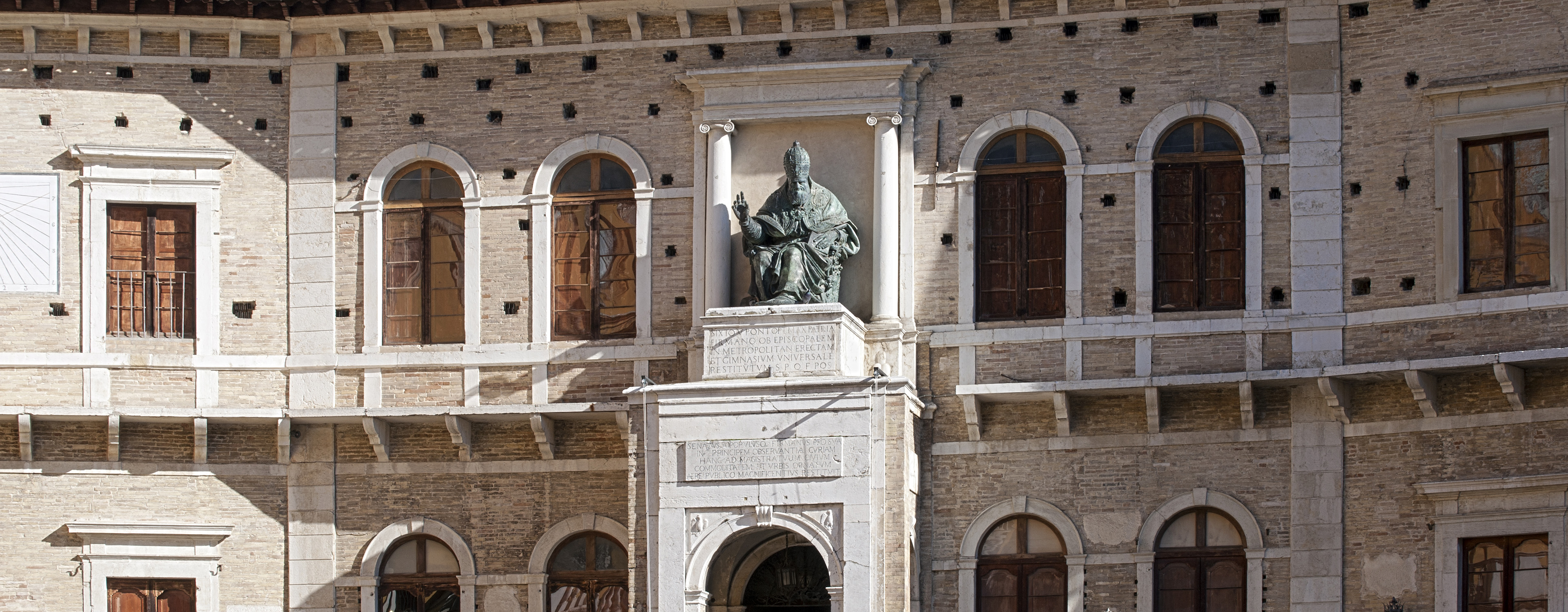
Fermo, a prestigious historic city that rises a stone’s throw from the sea, with a classic taste where everyone is the protagonist.
Latest posts from the magazine

Palazzo dei Priori and the museum complex
The scenery of Piazza del Popolo guards the oldest public building in town, Palazzo dei Priori, that seems to lure the passer-by’s gaze thanks to its peculiar fan-shaped opening. The sixteenth-century façade in cotto tile is divided by the string courses that harmoniously divide it into three parts both vertically and horizontally. In the middle of the façade a double staircase converges in the loggia, topped by a bronze statue of Pope Sixtus V. The building, born as Priors’ seat, the magistrates chosen among the most influential citizens of the six contrade (city quarters) that still divide the historic centre, was also the Municipality’s seat and today it’s an important museum complex.
On the first floor, you can visit the elegant Sale di Rappresentanza (Representation Rooms) of the City Hall. Among these, the Portraits Room, that owes its name to the rich collection of portraits of Cardinals and illustrious men and the Eagle Room, today’s seat of the Municipal Council, characterized by a majestic eighteenth century decoration representing the political and cultural glories of the city.
On the second floor there’s the Civic Art Gallery. The collection was constituted over time thanks to the acquisition of works from the churches of the city and of the whole area. The Art Gallery occupies five rooms and collects masterpieces by undisputed Masters like Jacobello del Fiore, Vittore Crivelli, Giovanni Lanfranco and Pieter Paul Rubens. You can find many artifacts and relics connected to Fermo, as a proof of its historical and political importance. Among them, you can admire the City Coat of Arms, characterized by the eagle and Lu Marguttu, a wooden polychrome statue used in the past during the Medieval celebrations on 15 August on the occasion of the Assumption’s Day, Fermo’s patron saint. There are also many gothic works realized on panels enriched by golden backgrounds. Among them must be mentioned the Polyptych of Santa Caterina, by Andrea da Bologna, with its rich original woodwork, and the fine Madonna of the Humility by Francescuccio di Cecco Ghissi, that represents the Madonna during the intimate moment of the breastfeeding. Undisputed masterpiece is the Polyptych of Santa Lucia, by the Venetian Jacobello del Fiore. The eight scenes are set in fairy backgrounds characterized by gothic architectures and mountain landscapes and enlivened by characters in sumptuous clothes, Santa Lucia above all with her golden clothes. The museum’s most prestigious work is without doubt the Adoration of the Shepherds by the great Flemish artist Pieter Paul Rubens, that with its nocturnal light charged with glares stands out in the Baroque Room, that hosts many other valuable works such as the majestic Pentecost by Giovanni Lanfranco.
At the end of the visit, we find the enchanting Globe Room, that preserves the oldest nucleus of the civic library, established in 1688 thanks to a conspicuous financial donation by Cardinal Decio Azzolino. The room, completely covered with wood, with shelves in walnut and a paneled ceiling in fir wood, owes its name to a large globe completely drawn in pen by the cosmographer Amanzio Moroncelli in 1713. The globe is the main character of an interesting mystery you can only discover visiting this fascinating room.
Taking a walk among the Rooms of Palazzo dei Priori is like travelling in time in Fermo’s history, from the oldest periods, testified by the archaeological finds from almost 3000 years ago to the modern time, going through the political and artistic glory of the Middle Ages and the suggestive elegance of the XVII century.

The Museum Complex of Palazzo dei Priori, dating back to 1296, houses Fermo Civic Art Gallery. It includes the Globe Room.